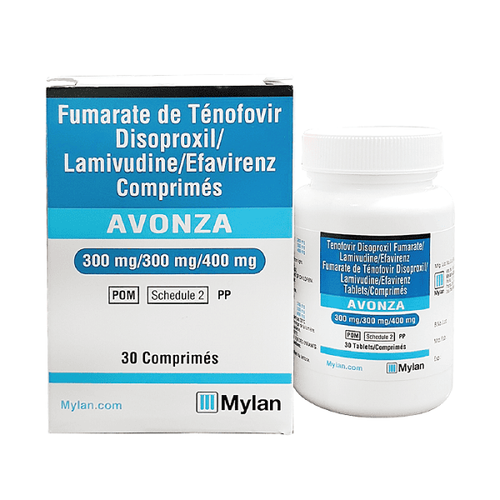This is an automatically translated article.
Cycloserine is a commonly prescribed drug for the treatment of resistant tuberculosis. In a Cycloserine tablet contains the main ingredient is Cycloserine with a content of 250mg. This is a prescription drug, so patients need to follow the instructions from the doctor to increase the effectiveness of treatment. Read the article below to get more useful information about this tuberculosis drug line.1. What is Cycloserine?
Cycloserine is an antibiotic isolated from bacteria of the genus Streptomyces, Streptomyces garyphalus or Streptomyces orchidaceus.Cycloserine drug works by preventing bacteria from synthesizing cell envelopes by inhibiting the reactions involved in cell envelope synthesis in which D-alanin is involved. Cycloserine has this ability because the structural formula of Cycloserine is similar to the amino acid D-alanin, thereby competitively inhibiting D-alanin in the synthesis of the cell envelope.
In the in vitro environment without D-alanin, strains of bacteria belonging to genus Nocardia, genus Enterococcus, genus Chlamydia, staphylococcus aureus, bacteria E.coli were also inhibited by Cycloserine.
Although Mycobacterium tuberculosis-responsive strains are very sensitive to Cycloserine, however, when treated with Cycloserine alone, these strains become resistant to the drug very quickly. Currently, in clinical treatment as well as in laboratory research conditions, the phenomenon of tuberculosis bacteria resistant to natural and acquired Cycloserine has been recorded. To overcome this situation, people often use a combination of other TB drugs with Cycloserine, which combination can treat cases of drug-resistant TB.
However, the phenomenon of drug-resistant bacteria, especially drug-resistant tuberculosis, is becoming more and more serious in the world, causing many difficulties in disease prevention and treatment, so Cycloserine is used very limited. . Cycloserine is only indicated for drug-resistant tuberculosis to minimize this condition.
2. What does Cycloserine do?
Patients will be prescribed Cycloserine in the following cases:
Treatment of drug-resistant tuberculosis when used in combination with other TB drugs such as Streptomycin, Ethambutol, Rifampicin,... Article Treatment of urinary tract infections On the other hand, the drug is contraindicated for the following subjects:
Patients who are sensitive to any ingredient of the drug. Patients with severe renal function impairment People with neurological diseases such as depression, epilepsy, anxiety disorders, etc. Patients with alcoholism or have been addicted to alcohol before. treatment.
3. Dosage and how to use Cycloserine
3.1. How to use The drug is made in the form of a capsule, so it is recommended that patients take it orally. The drug does not depend on food, so you can take it with or without food. However, when taking the drug, you need to swallow the tablet whole, do not break it in half or crush it. Take the medicine with plenty of filtered or boiled water.
Time to use the drug is 2 times / day or as directed by the doctor. Because this belongs to the group of antibiotics, the doctor will recommend that the patient take the medicine at regular intervals to increase the effectiveness of the treatment. Because of this, you need to take your medicine at the same times each day.
Always follow your doctor's prescriptions. Changing the dose or stopping the medication too soon can cause bacteria to grow stronger, leading to a re-infection. This makes treatment difficult.
3.2. Dosage Each patient will be prescribed a different medication. Depending on the health status, weight of the patient as well as different treatment purposes, the doctor will adjust the appropriate dose. However, no patient should take more than 1000 mg per day. Patients can refer to the following recommended dosage:
For adults, the starting dose will be 250mg / time. After 2 weeks, your doctor will adjust your dose to keep your blood levels below 30 micrograms/ml. Most use doses of 500 mg/day up to 1 g/day in divided doses. Doses higher than 1g/day are not recommended. For adults and children 15 years of age and older, a dose of 10-15 mg/kg (up to 1 g/day) may be given in 2 divided doses daily. In children under 15 years of age, the optimal dose has not been established. Therefore, to be safe, the doctor may prescribe a starting dose of 10 mg/kg body weight per day. Then adjust the dose according to the blood concentration and response to the drug. Patients with renal impairment and creatinine clearance < 50 ml/min are not usually prescribed cycloresine. If you forget to take a dose of Cycloserine, take it as soon as you remember. In case it is almost time for the next dose, skip the missed dose and take the next dose as scheduled;
Using an overdose of Cycloserine can cause dangerous symptoms such as: Headache, dizziness, confusion, somnolence, increased excitability, paresthesia, dysarthria and psychosis, even convulsions, and coma. Patients should proactively notify their doctor if they find themselves using more than the recommended dose.
In case of overdose, the doctor will prescribe measures such as: induce vomiting and/or gastric lavage. Your doctor may also use activated charcoal and an enema every 4 hours until the condition is stable. If the patient has symptoms of convulsions, anticonvulsant drugs will be used. If the patient uses an overdose leading to neurotoxicity, it is indicated to take 200-300 mg of pyridoxine hydrochloride daily in divided doses.
4. Cycloserine side effects
The adverse effects caused by Cycloserine will more or less affect the health and quality of life of the patient.
Some common side effects such as: Headache, dizziness, anxiety, dizziness, somnolence, tremors, convulsions, depression... Less common side effects have been reported such as: Mental changes, personality changes, irritability, aggression... Rare side effects such as: Erythema, megaloblastic anemia, iron deficiency anemia, decreased calcium absorption , magnesium... The above are not all side effects of Cycloserine. Other side effects may occur during treatment with this medicine. Therefore, when there are abnormal signs suspected of being caused by the drug, the patient should notify the doctor.
5. Cycloserine drug interactions
Drug interactions are common when medications are combined. The result of this process will make the drug increase or decrease the therapeutic effect, or give rise to some unwanted effects that are detrimental to the patient. The same goes for Cycloserine. Here are some drugs that can interact with Cycloserine such as: isoniazid and ethionamide, pyridoxine...
6. Be careful when using Cycloserine
For patients prescribed a dose of 500 mg cycloresine daily should be monitored during the first 2 weeks of treatment. Patients should have liver, kidney and hematology tests regularly during the course of taking the drug. Cycloserine is prescribed only for bacterial infections and is not effective for viral infections. Avoid long-term use of antibiotics that lead to antibiotic resistance. Pregnant or nursing women should only use the drug when absolutely necessary and according to the dosage prescribed by the doctor. Store at room temperature, protected from moisture and light. Do not store in the bathroom. The above article has helped readers answer questions about the use of Cycloserine. Hopefully, it will help readers use drugs safely, increase the effectiveness of disease treatment and limit the risks when using drugs.
Please dial HOTLINE for more information or register for an appointment HERE. Download MyVinmec app to make appointments faster and to manage your bookings easily.













